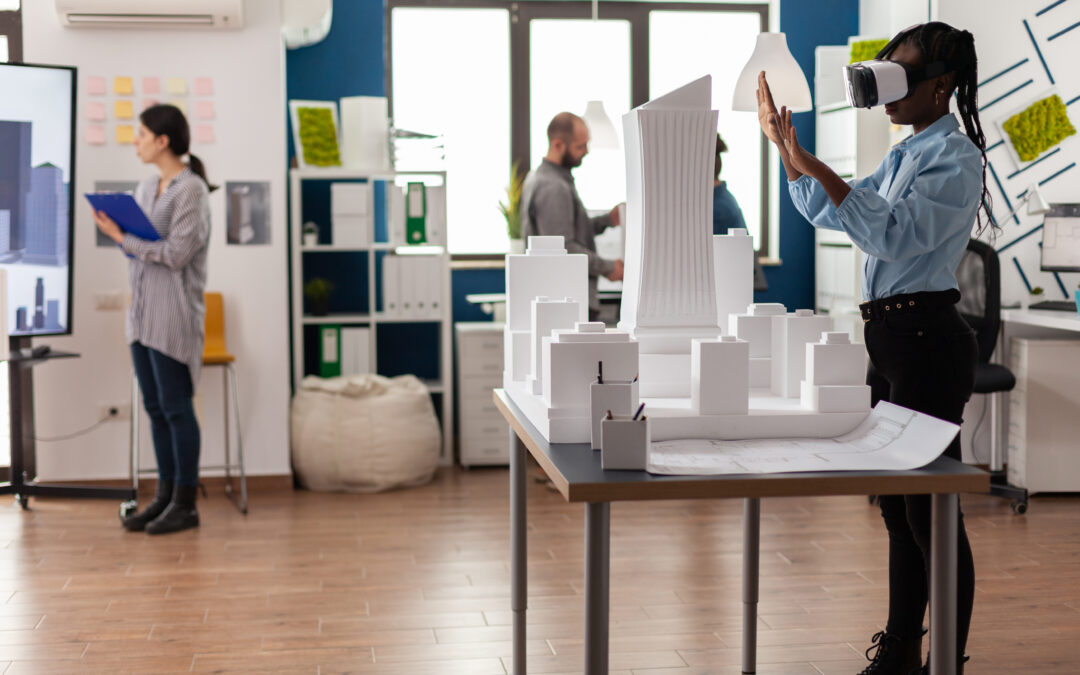Augmented reality is a technology that allows digital information to be overlaid onto the real world. This technology has enormous implications in many fields, including architecture.
Augmented reality enables the visualization of 3D models of buildings even before they are built, so that it is possible to see how they fit into their environment. This revolutionary technology is changing the way architects, engineers, and clients approach building design.
Visualizing 3D building models before construction

One of the most obvious advantages of augmented reality in architecture is the ability to visualize 3D models of buildings even before they are built.
Architects can use augmented reality glasses to visualize their design in the real environment. This allows architects to see how their design fits into the environment, if they need to make adjustments, and how their design will affect natural light and traffic flow.
Clients can also use augmented reality to visualize their future building and provide feedback on the design.
Augmented reality facilitates communication between architects and clients

Augmented reality also facilitates communication between architects and clients. Clients can see the design of their future building in real time, allowing them to provide feedback and make adjustments.
Architects can also use augmented reality to communicate more effectively with clients by showing 3D models rather than flat paper plans.
Augmented reality allows for better understanding of complex designs

Modern buildings can be very complex, with unusual shapes and angles. Flat paper plans can be difficult to understand, even for experienced architects.
Augmented reality allows these complex designs to be visualized in 3D, making them easier to understand and communicate.
Augmented reality improves design efficiency
Lastly, augmented reality improves the efficiency of design. Architects can use augmented reality to create virtual models of their design and quickly and easily make changes. This reduces design costs, shortens the time it takes to design a building, and reduces design errors.
Augmented reality also allows for the simulation of weather conditions and other environmental factors to test the durability of a building before construction.
Conclusion
Augmented reality is revolutionizing architecture by allowing for the visualization of 3D building models before construction, facilitating communication between architects and clients, enabling better understanding of complex designs, and improving design efficiency.
Augmented reality is changing the way architects design buildings, and this exciting technology is destined to play an increasingly important role in architecture in the years to come.


